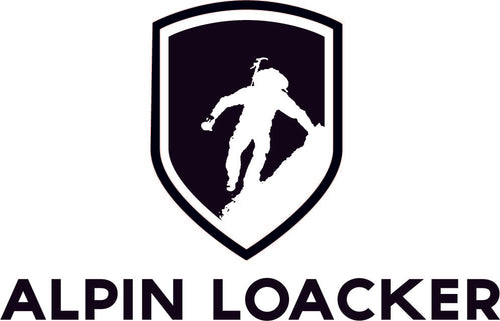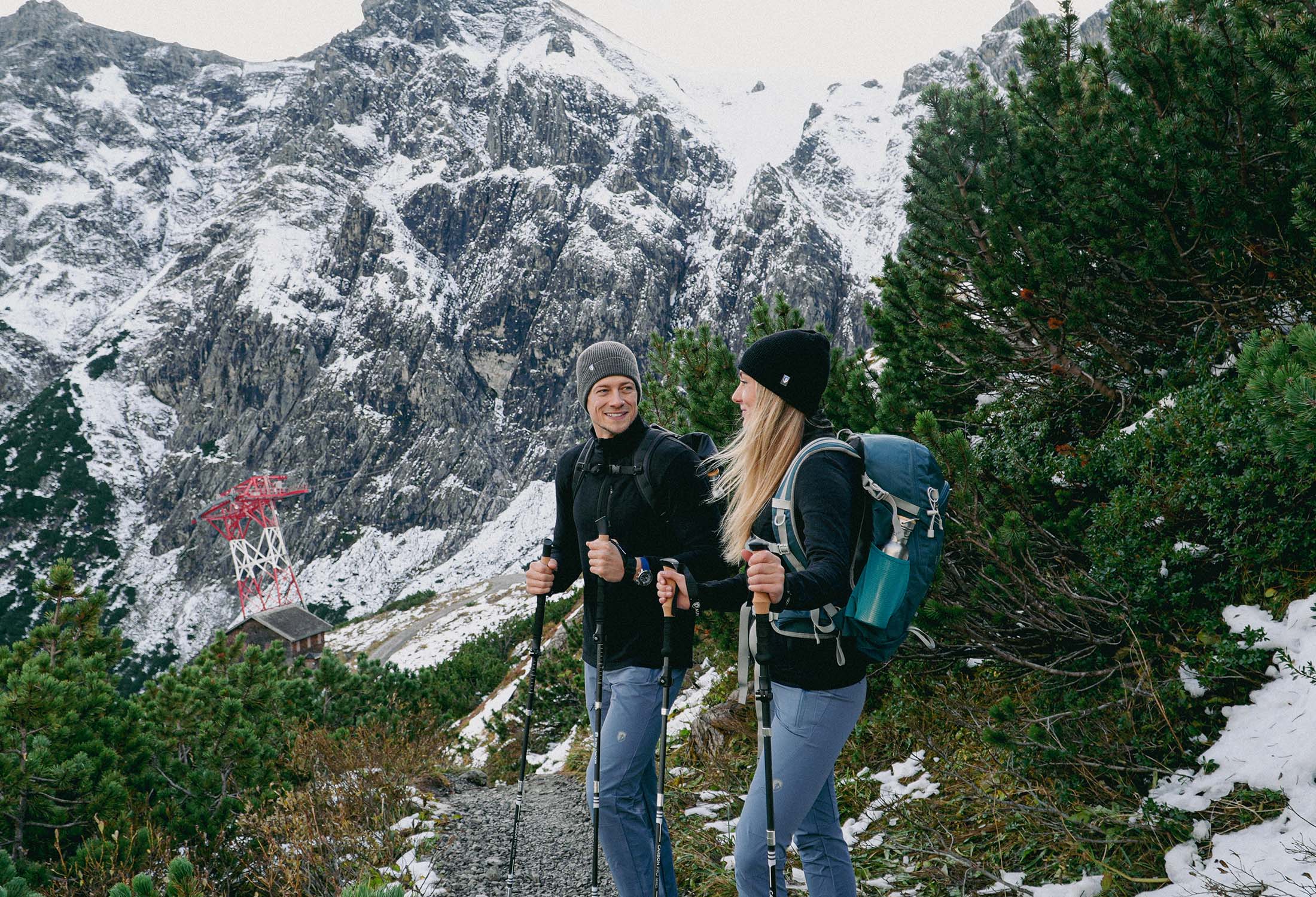Crossing the Alps on foot is undoubtedly one of the most spectacular hiking experiences. Anyone who masters this adventure returns home with a completely changed worldview. No wonder!
After all, you are on the road for days or even weeks and completely in harmony with nature. Far from civilization, you breathe absolutely pure air and can leave your everyday life behind.
Not your schedule, but the sun will determine your rhythm from now on. However, Transalp hiking requires a good preparation and should never be done on a whim. Our blog post will help you with this.
Here you will find suitable routes and a wealth of valuable tips for a spectacular and safe hike. So you are optimally prepared when the mountains call!

Which routes are suitable for an Alpine crossing?
First of all: Not all routes are suitable for your project. Especially a suitable route for beginners should be well thought out. A particularly popular Alpine crossing is the long-distance hiking trail E5.
This incomparable route offers you numerous breathtaking impressions. But many other hiking routes are also waiting to be discovered by you. Are you ready?
Alpine crossing from Oberstdorf to Merano
The hike from Oberstdorf to Merano in South Tyrol is part of the famous long-distance hiking trail E5. Depending on your condition, you should plan for 7-9 days. However, the route requires some experience and is not a suitable Alpine crossing for beginners. But your efforts will be rewarded with breathtaking impressions.
In addition to the diverse flora and fauna, the varied panorama during the Alpine crossing from Oberstdorf to Merano also allows you to visit the Ötzi discovery site.
| Info | Details |
| Route | 111 km |
| Stages | 6 |
| Difficulty | T2 - T3 |
| Public Transport | Bus or taxi transfer |
| Highest Point | 3019 m (Niederjoch) |
| Traversed Regions | Allgäu Alps, Lechtal Alps, Ötztal Alps, Schnalstal |

Alpine crossing from Salzburg to Trieste
Anyone who seeks absolute peace and almost untouched nature while hiking over the Alps is in the right place on this tour. However, the route is also very demanding and should be undertaken by experienced hikers will be. It might even make sense to book a guided Alpine crossing.
The tour through four countries (Germany, Austria, Slovenia, and Italy) mainly requires absolute surefootedness. You should also be free from vertigo. However, you will be rewarded with a breathtaking panorama.
| Info | Details |
| Route | 500 km |
| Stages | 28 |
| Difficulty | T3 - T4 |
| Public Transport | Bus and Train |
| Highest Point | 2754 m |
| Crossed Regions |
Berchtesgaden Alps, Salzburg Slate Alps, Goldberg Group, Kreuzeck Group, |
Alpine crossing from Tegernsee to Sterzing
The Alpine crossing from Tegernsee to Sterzing takes you from Upper Bavaria to South Tyrol. On this pleasure route, even leisurely hikers will get their money's worth. Thanks to the easy to moderately difficult stages, the route is feasible and also suitable for inexperienced hikers. Hence the name "Pleasure Route", which also includes a bookable luggage transport.
The approximately 7 stages can also be shortened as needed with the help of public transport. The route from Tegernsee to Sterzing also has a lot to offer in terms of scenery, such as the picturesque Tiefenbach Gorge or the old town of Sterzing.
| Info | Details |
| Route | 144 km |
| Stages | 7 |
| Difficulty | T1 - T2 |
| Public Transport | Bus, train, and cable car transfer possible |
| Highest Point | 2246 m Pfitscher Joch |
| Crossed Regions | Bavarian Pre-Alps, Achensee, Zillertal Alps, Tux Alps, and Pfitsch Valley |

Alpine crossing from Garmisch to Brescia
This Alpine crossing is considered a insider tip for experienced hikers. Because on the way from Garmisch to Brescia, you will hardly encounter anyone. You will also search in vain for infrastructure here. Since no shortcut with public transport is possible and you will also overcome some glaciers, you should definitely carry good hiking poles and crampons.
| Info | Details |
| Route | 437 km |
| Stages | 28 |
| Difficulty | T2 - T5 |
| Public Transport | none |
| Highest Point | 3208 m Hauslabjoch |
| Crossed Regions | Memminger Mountains, Stubai Alps, Ötztal -, and Ortler Alps, Adamello Alps |
Alpine Crossing from Munich to Lake Garda
The Alpine Crossing from Munich to Lake Garda is also not heavily frequented and offers you plenty of opportunities to enjoy the silence and nature. Visually, you will also be offered a lot. You will be able to discover a lot over limestone and grass mountains to glaciers.
However, if you value company, you can of course also book a guided alpine crossing.
| Info | Details |
| Route | 550 km |
| Stages | 31 |
| Difficulty | T3 - T4 |
| Public Transport | Bus |
| Highest Point | 2950 m |
| Crossed Regions | Pre-Alpine Lands, Karwendel, Inn Valley, Tux Alps, Zillertal Alps, Sarntal Alps, Brenta |

Alpine Crossing from Innsbruck to Venice
If you want to make the Alpine Crossing easy, this route is a good choice. There are some difficult passages in between, but the majority is walkable without much effort.
Visually, the route from Innsbruck to Venice also offers a lot and provides you with a varied panorama.
| Info | Details |
| Route | 465 km |
| Stages | 13 |
| Difficulty | T1 - T4 |
| Public Transport | Cable car and bus |
| Highest Point | 2886 m |
| Crossed Regions | Tyrol, Zillertal Alps, Tux Alps, Dolomites |
5 Tips for the Alpine Crossing
To make the Alpine Crossing on foot a real highlight, there are some things to consider. Especially those who want to undertake the tour alone should consider a few things in advance. The following tips will help you with that:

1. The right equipment for an Alpine Crossing
Depending on the difficulty level and duration Of course, your luggage differs. In our guide Ultralight Outdoor Equipment: Packing List for Multi-day Hiking, we have already assembled the appropriate equipment for you.
Starting from the light mountain backpack to the down sleeping bag and emergency kit, you will find all the items listed here that you need for an Alpine crossing alone or in a team.
2. Alpine Crossing with Children: Is it Possible?
Yes! With older children, an Alpine crossing is certainly possible. However, this special vacation requires good preparation. Here you can check together whether the little ones enjoy hiking at all and how their stamina is.
An Alpine crossing E5 that is guided can be a great experience for children aged 10 and up. However, they should not have to carry excessive luggage, as the stages are already strenuous enough for children.
3. How Do I Prepare for an Alpine Crossing?
The preparation for an Alpine crossing primarily involves good planning and optimal stamina. Extensive hikes in advance help you train your muscles and endurance. You should also always keep time in mind.
Plan to include more days than might seem necessary at first glance. This way, you can take additional breaks if needed and don't have to rush along the path just because you need to return to your everyday life. After all, Transalp hiking is about the deep connection with nature and the feeling of boundless freedom.

4. When is the Best Time of Year for an Alpine Crossing?
The best time of year for an Alpine crossing is summer. Here, the open huts offer sufficient overnight accommodations and the weather is particularly pleasant.
However, when hiking across the Alps, you must also expect cooler temperatures and even snowfall from July to September. Accordingly, you should also have warm clothing in your luggage.
5. Crossing the Alps without a guide or with: What is better?
A guided crossing of the Alps is neither better nor worse than hiking the Transalp alone. It really depends on your individual preferences and experience. If you already have good fitness and many years of experience, you can plan and carry out your crossing of the Alps yourself, – as long as you trust yourself and feel good about it.
Since the tour also involves some challenges, you should be absolutely honest with yourself. A guided hike is not a disgrace, but an opportunity to gain experience in a safe environment and meet new people.
Conclusion
Crossing the Alps on foot is probably one of the most spectacular hikes you can do. However, the adventure requires a lot of preparation and especially practice in advance. A crossing of the Alps for beginners should always be conducted with a guide.
FAQ
Which is the easiest crossing of the Alps?
The easiest crossing of the Alps is the route from Tegernsee to Sterzing. The daily 20 kilometers with a maximum of 900 meters of elevation gain are manageable even for beginners.
How long does it take to cross the Alps?
The duration of a crossing of the Alps varies. There are routes that can be completed in 5 or 7 days. Other tours take significantly longer when hiking the Transalp.
How expensive is a crossing of the Alps?
Excluding travel costs, the costs for accommodation and meals are around 500 euros per person.
Find out what else we have to offer and keep reading!



